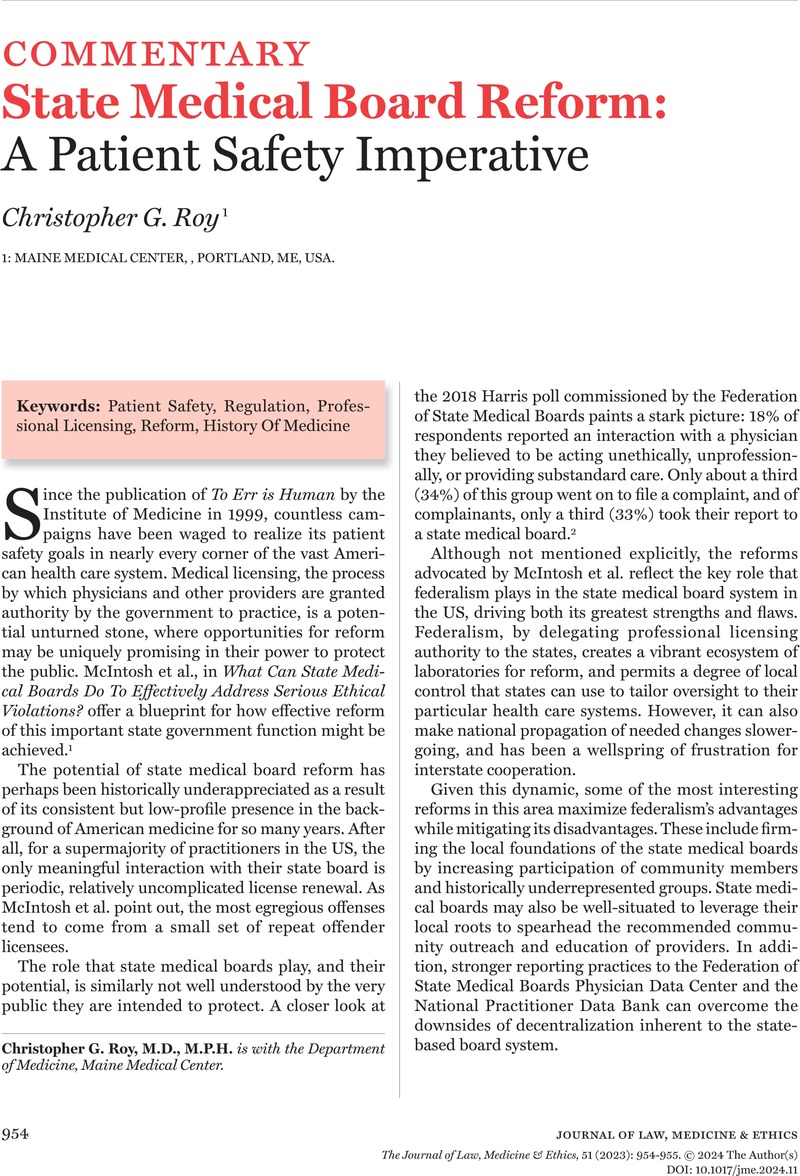Johnson, D. and
Chaudhry, H.,
Medical Licensing and Discipline in America (
Lanham (Maryland):
Lexington Books;
2012); I.M.Proctor and D. Long,
One Hundred Year History of the North Carolina State Board of Medical Examiners (Raleigh, NC: Edwards and Broughton Co; 1959).
Google Scholar 